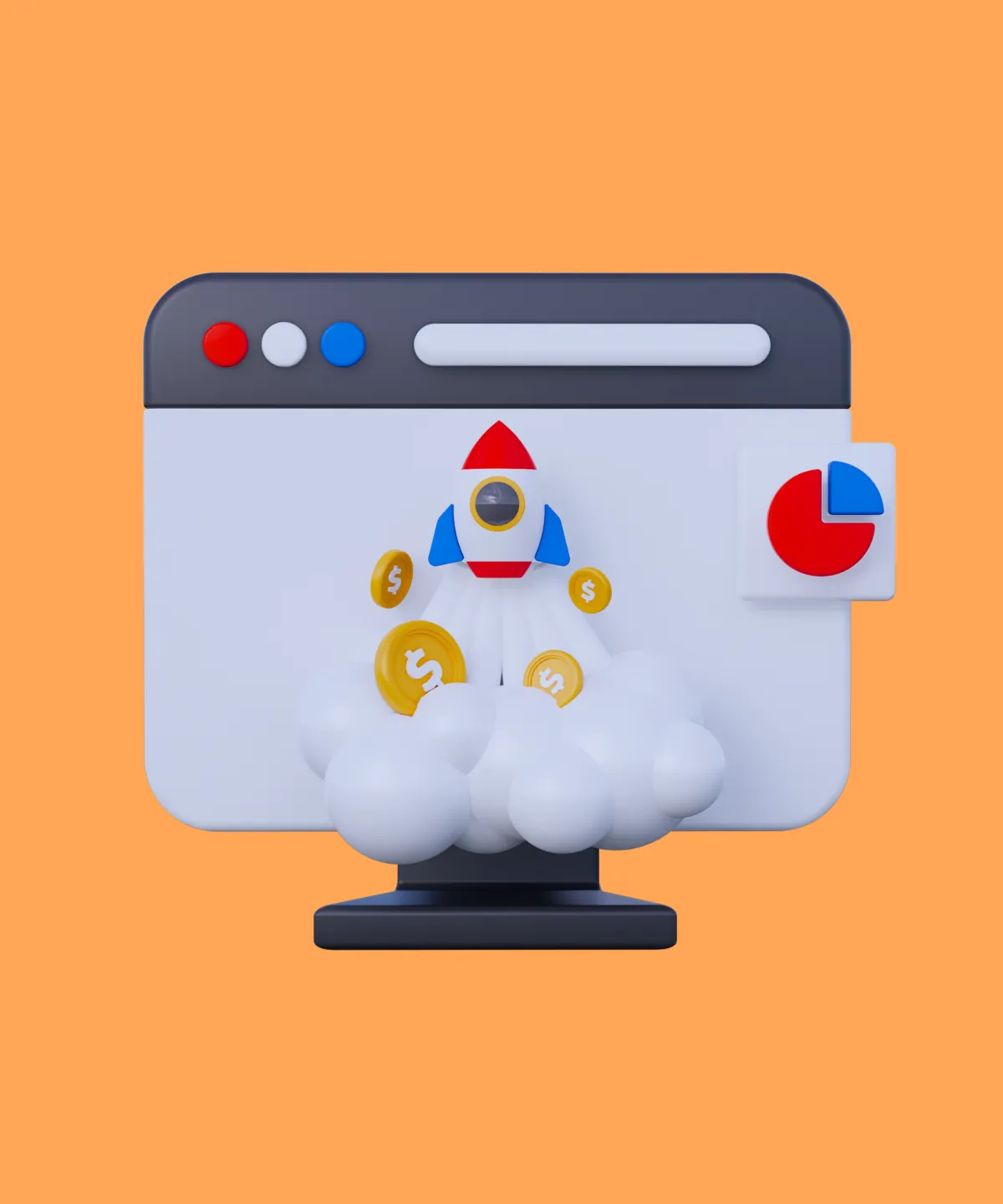When launching a new product, one of the most critical decisions to make is how to introduce it to the market. The launch strategy you choose can significantly impact the product's initial success and long-term trajectory. This decision becomes even more crucial for cross-platform apps, where user experience needs to remain consistent across devices. At What the Flutter, we specialize in developing cross-platform apps using the Flutter framework, ensuring optimal user experience. This article will provide you with a comprehensive understanding of two primary types of product launches: the soft launch and the hard launch.
By understanding these strategies in depth, you'll be equipped to make a more informed decision, ensuring that your product not only reaches its intended market but does so in a way that optimizes its chance for success. Let's dive in!
Soft Launch
A soft launch is often seen as a strategic, controlled roll-out of a new product or service to a limited audience or geographical location. This strategy is typically chosen to test, learn, and refine the product based on real-world feedback before a full-scale release.
At its core, a soft launch is an opportunity for businesses to gather insights and make modifications to ensure that their product is as close to perfect as it can be when it's introduced to a wider audience. It can be seen as a 'live' beta test, where select customers get the chance to experience the product, and their feedback is used to fine-tune the product, fix bugs, or refine marketing strategies. This approach is especially popular in the tech industry, particularly with mobile app launches, but can be effectively utilized in other sectors as well.
Pros and cons of a soft launch
Pros:
- Risk management: A soft launch allows for risk mitigation. If there are unanticipated issues with the product, they become evident during this phase and can be addressed before a wider release.
- Real-world testing: It provides an opportunity to gather real-world user feedback and data which can be instrumental in refining the product.
- Market validation: Soft launches can be used to validate product-market fit, allowing the company to adjust the product, pricing, or marketing strategy as needed.
Cons:
- Limited audience: Since a soft launch targets a specific segment, the feedback received may not represent the views of the broader market.
- Time-consuming: Soft launches can extend the product's time to market, which might be a disadvantage in rapidly changing industries.
- Leakage of competitive advantage: Competitors may get wind of the product during the soft launch, giving them time to create counter-strategies.
Examples of successful soft launches
Facebook's journey is a classic example of a successful soft launch. It initially launched in 2004, exclusively for Harvard students. As it saw success and refined its offering, it expanded access to other universities, then high schools, and finally, in 2006, to anyone over 13 with an email address. This gradual rollout allowed Facebook to grow and scale in a controlled manner.
Gmail
Google's email service, Gmail, was introduced via an invitation-only beta release in 2004. This soft launch strategy enabled Google to thoroughly test the service and add features based on user feedback. It wasn't until 2009 that Gmail became open to the general public, by which time it was a robust and well-regarded product.
Slack
Before its public launch in 2014, Slack employed a soft launch strategy, starting with an invite-only beta period. This phase allowed them to receive feedback, understand user behavior, and refine their product, leading to a highly successful public launch.
Hard Launch
A hard launch, in stark contrast to a soft launch, is when a product is introduced to the market with full force and to its entire intended audience from the get-go. Accompanied by significant marketing and PR efforts, a hard launch aims for maximum visibility and immediate market penetration.
A hard launch represents a brand or company's full confidence in their product's readiness for the market. It means the product has already undergone rigorous testing, and the company believes it meets all the needs and demands of its target audience. With a well-planned marketing strategy in tow, a hard launch seeks to capture significant market share instantly.
Pros and cons of a hard launch
Pros:
- Immediate market impact: With widespread marketing campaigns and PR efforts, a hard launch aims to quickly make its mark, building momentum and brand awareness.
- Financial gains: An immediate and wide release can lead to faster returns on investment, crucial for businesses that may have invested heavily in product development.
- Competitive advantage: A well-executed hard launch can outpace competitors, positioning the product as a leader in its category.
Cons:
- Higher risks: If there are overlooked flaws or the market isn't as receptive as anticipated, there's little room to pivot without public scrutiny.
- Intense pressure: A hard launch puts immense pressure on all aspects of a business, from supply chain to customer support, to perform flawlessly.
- Resource intensive: A hard launch requires significant investments, not only in product development but also in marketing, PR, and logistics.
Examples of successful hard launches
Pokémon GO
When Niantic launched Pokémon GO in 2016, it was nothing short of a global phenomenon. Using augmented reality to bring Pokémon into the real world, the app was released in select countries and quickly expanded worldwide due to immense demand. With significant media attention and people flocking outdoors to "catch 'em all," Pokémon GO set records for the fastest mobile game to reach $100 million in consumer spending.
Apple's iPhone
One of the most iconic hard launches in tech history is Apple's introduction of the iPhone in 2007. With months of buzz created even before its launch and a groundbreaking keynote by Steve Jobs, the iPhone was unveiled with unmatched fanfare. Apple's confidence in its product and its ability to deliver resulted in a revolutionary shift in the smartphone industry.
Amazon Kindle
Amazon's Kindle e-reader was introduced to the market with a hard launch in 2007. Through strategic marketing and CEO Jeff Bezos appearing on popular talk shows, the Kindle quickly gained prominence. The device sold out within five and a half hours and remained out of stock for five months. Amazon's aggressive launch strategy helped the Kindle become synonymous with e-readers and revolutionized the digital reading market.
Choosing the Right Launch Strategy for Your Product

When contemplating which launch strategy to employ, it's crucial to take a step back and consider various factors that can shape your product's success. By evaluating these determinants, businesses can tailor their launch approach, ensuring it's well-suited to both the product and the market it's venturing into.
Factors to consider when choosing a launch strategy
1. Nature of your product
- Innovative vs. Incremental: If your product is groundbreaking or introduces a novel concept, a hard launch might generate buzz and capitalize on its novelty. On the other hand, if it's a slight variation or improvement of an existing product, a soft launch can allow for feedback and refinement.
- Complexity: Products that have a steep learning curve or require user adaptation might benefit from a phased, soft launch, allowing for education and adjustment. For example, a fitness app developed with Flutter might benefit from a soft launch to gather user feedback and make necessary adjustments. Simpler products that fit into existing user behaviors might be ready for a hard launch.
2. Target market
- Market size: For niche markets or specific demographics, a soft launch can provide more focused feedback. In contrast, mass markets with broad appeal might warrant the visibility of a hard launch.
- Market familiarity: If you're entering a market where your brand is unknown or the competition is intense, a soft launch can help gauge the reception. Conversely, established brands in familiar markets can often leverage hard launches effectively.
- Market volatility: In rapidly changing markets, a quick hard launch might capture share before dynamics shift. Stable markets might offer the luxury of a more measured, soft launch approach.
3. Target audience
- Audience feedback value: If gaining early user feedback is vital for your product, a soft launch can provide that opportunity. For products where feedback might not significantly alter the product direction, a hard launch can be more appropriate.
- Audience behavior: Understanding whether your audience is an early adopter or more conservative can dictate launch strategy. Early adopters might be more forgiving of minor issues, while a broader audience will have higher expectations from the outset.
4. Resources available
- Financial considerations: Hard launches typically require a significant upfront investment in marketing and promotion. If resources are limited, a soft launch can be more economical, with expenses spread out over the testing phase. While considering the resources for your launch strategy, it's also essential to understand the development cost. Our guide on Flutter app development cost can provide a clearer picture of the overall expenses and help in budgeting.
- Human resources and infrastructure: A hard launch demands that all systems, from customer support to delivery mechanisms, are operating at peak efficiency. If there's uncertainty about handling high demand, a soft launch provides a safer environment to test and scale operations.
- Time: If there's pressure to start seeing a return on investment quickly, a hard launch can offer quicker revenue. However, if there's flexibility in the timeline, a soft launch might afford more time for refinements.
These considerations should not be viewed in isolation. Instead, they interact and overlap, creating a nuanced decision-making landscape. By assessing each factor in the context of your unique situation, you can make a strategic choice that positions your product for success in the market.
Considering a Hybrid Approach
In some instances, a strict categorization into either a soft or hard launch might not be the optimal approach. Recognizing this, businesses can utilize a hybrid method, leveraging the strengths of both strategies to maximize their product's market potential.
How does a hybrid launch work?
A hybrid approach typically involves conducting an initial soft launch to gather essential data, feedback, and understand the market dynamics. Once the early feedback has been incorporated, and any issues addressed, a full-scale hard launch is then carried out, introducing the product to a wider audience with substantial marketing support. This approach allows businesses to refine the product and its marketing strategy based on real-world data, then capitalize on the insights gained for a broader, more aggressive launch.
Benefits of the hybrid approach
- Flexibility: Allows businesses to test the waters and then pivot based on real-world experience.
- Risk reduction: By starting with a soft launch, businesses can identify and rectify potential issues before investing heavily in a large-scale launch.
- Maximizing impact: The initial soft launch can build anticipation and buzz, which can be leveraged to amplify the subsequent hard launch.
Conclusion
Selecting the right launch strategy for your product isn't just about making a debut – it's about setting the trajectory for its future in the market. As we've explored, both soft and hard launches have their unique advantages, challenges, and contexts where they shine. Sometimes, a fusion of the two, the hybrid approach, might be the golden ticket. Just as we've seen success in our cross-platform app projects using the Flutter framework, aligning the right launch strategy with your product ensures optimum reception and lasting impact in the market.
Remember, the goal isn't to find the most popular or trendy approach but to identify the strategy that aligns best with your product, audience, market dynamics, and available resources. Each product and situation is unique, and understanding the nuances of your particular circumstance is essential.
The launch is just the beginning of your product's journey, but it sets the tone for everything that follows. Choose wisely, and you'll be well on your way to success.












